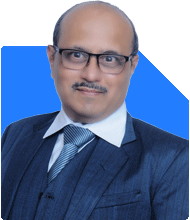Should I keep my current SIP investments?
Nitin Narkhede | Answer |Ask -Follow
MF, PF Expert - Answered on Sep 13, 2024
As a mentor, Nitin has trained over 1,000 individuals, many of whom have seen remarkable financial transformations.
Nitin holds various certifications including the Association Of Mutual Funds in India (AMFI), the Insurance Regulatory and Development Authority and accreditations from several insurance and mutual fund aggregators.
He is a mechanical engineer from the J T Mahajan College, Jalgaon, with 34 years of experience of working with MNCs like Skoda Auto India, Volkswagen India and ThyssenKrupp Electrical Steel India.... more

Dear Sir I am investing Monthly, in below SIP. Axis Blue-chip Fund Direct Plan Growth - Rs. 1000.00 Canara Robeco Emerging Equites Fund - Rs. 1000.00 SBI Blue-chip Direct Plan - Rs.1000.00 ICICI Pru. Technology Direct Plan - Rs. 2000.00 Kotak Emerging Equity Fund - Rs. 1000.00 UTI Flexi Cap Fund - Rs. 1000.00 Nippon India Small Cap Fund - Rs.1000.00 Mirae Asset Emerging Bluechip Fund - Rs. 1000.00 Axis Growth Opportunities Fund - Rs. 1000.00 Parag Parikh Flexi Cap Fund - Rs.1000.00 HDFC Index Fund Nifty 50 Plan - Rs 1000.00 DSP Flexi Cap Fund - Rs. 10000.00 Franklin India Opportunities Fund - One Time Invested Rs. 4,00,000.00 Please suggest can i continue with this fund. Also, How Much Corpus Generate after 20 years with this fund.
Assuming an average return rate of 10-12% per annum for equity mutual funds, Estimated Corpus After 20 Years Using an estimated return of 11%, Your portfolio could potentially grow to approximately Rs 2.24 crores.
You may like to see similar questions and answers below
Ramalingam Kalirajan |10870 Answers |Ask -Follow
Mutual Funds, Financial Planning Expert - Answered on Apr 30, 2024
Ramalingam Kalirajan |10870 Answers |Ask -Follow
Mutual Funds, Financial Planning Expert - Answered on Apr 30, 2024
Ramalingam Kalirajan |10870 Answers |Ask -Follow
Mutual Funds, Financial Planning Expert - Answered on May 30, 2024
Ramalingam Kalirajan |10870 Answers |Ask -Follow
Mutual Funds, Financial Planning Expert - Answered on Apr 05, 2024
Ramalingam Kalirajan |10870 Answers |Ask -Follow
Mutual Funds, Financial Planning Expert - Answered on Apr 30, 2024
Dr Dipankar Dutta |1837 Answers |Ask -Follow
Tech Careers and Skill Development Expert - Answered on Dec 05, 2025
Dr Shyam Jamalabad |108 Answers |Ask -Follow
Dentist - Answered on Dec 05, 2025
Dr Shyam Jamalabad |108 Answers |Ask -Follow
Dentist - Answered on Dec 05, 2025
Dr Shyam Jamalabad |108 Answers |Ask -Follow
Dentist - Answered on Dec 05, 2025
Dr Dipankar Dutta |1837 Answers |Ask -Follow
Tech Careers and Skill Development Expert - Answered on Dec 05, 2025
Ulhas Joshi |280 Answers |Ask -Follow
Mutual Fund Expert - Answered on Dec 05, 2025
Dr Dipankar Dutta |1837 Answers |Ask -Follow
Tech Careers and Skill Development Expert - Answered on Dec 04, 2025
Ravi Mittal |676 Answers |Ask -Follow
Dating, Relationships Expert - Answered on Dec 04, 2025
Anu Krishna |1745 Answers |Ask -Follow
Relationships Expert, Mind Coach - Answered on Dec 04, 2025
Anu Krishna |1745 Answers |Ask -Follow
Relationships Expert, Mind Coach - Answered on Dec 04, 2025


























